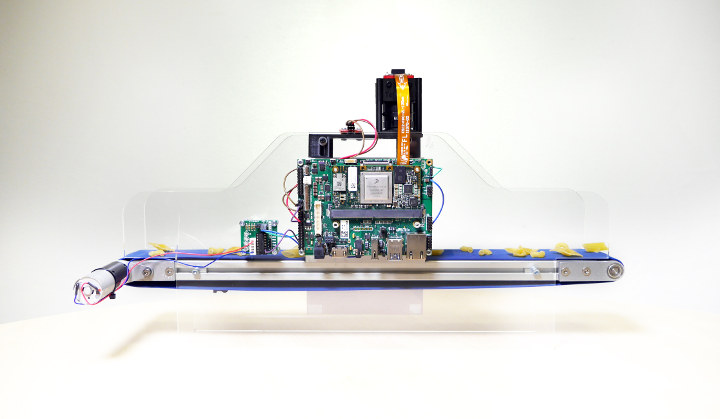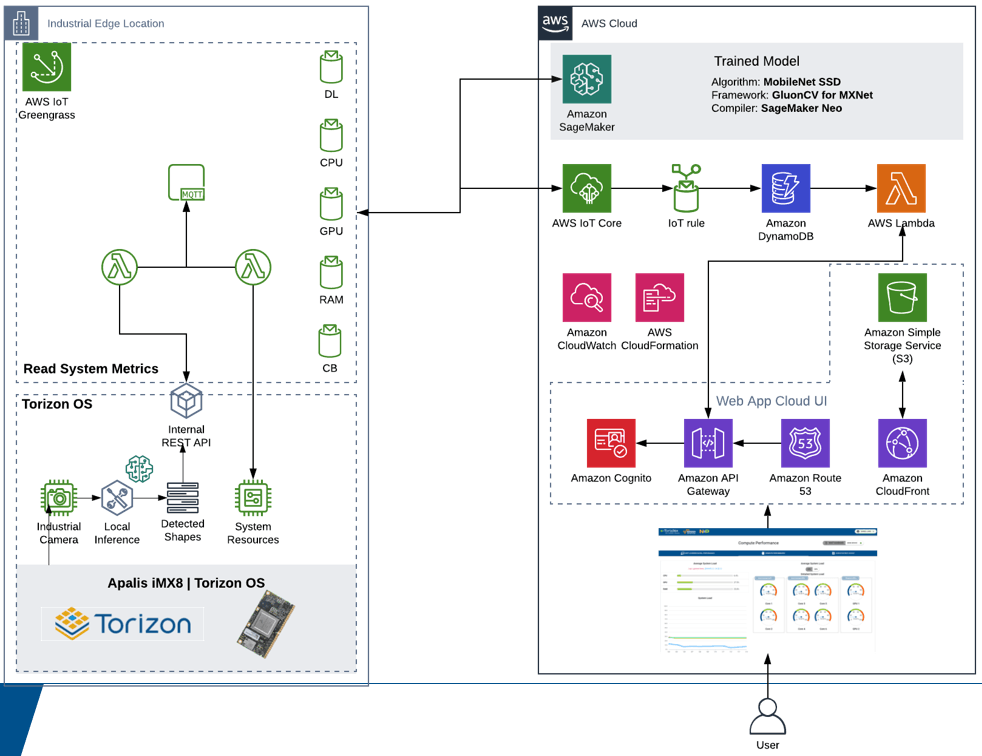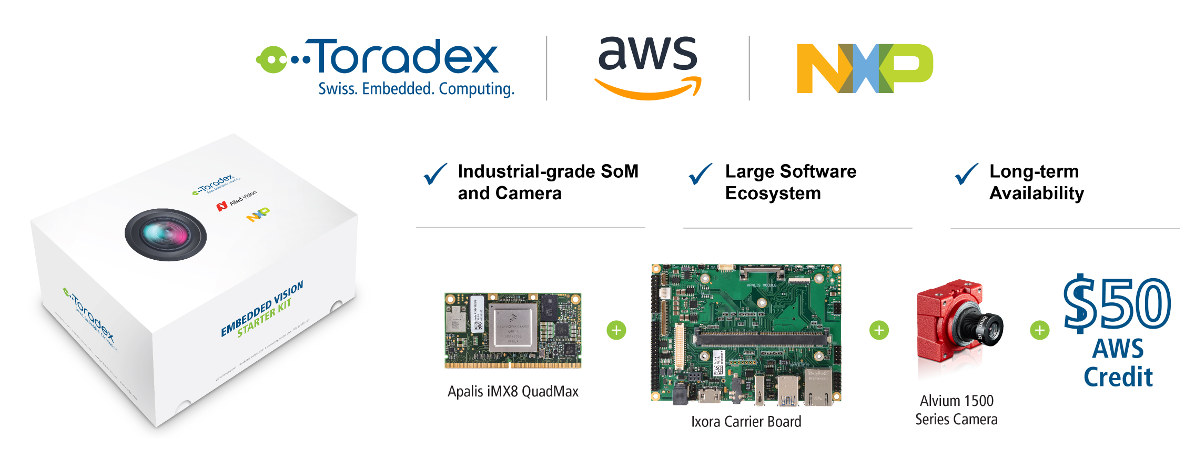Toradex, Amazon Web Services (AWS), and NXP Semiconductors collaborated to create the AI Embedded Vision Starter Kit aiming to ease the development of cloud-connected computer vision and machine learning applications in industries such as industrial automation, agriculture, medical equipment, and many more.

The AI Embedded Vision Starter Kit includes the following items:
- Toradex Apalis iMX8 System on Module (SoM) powered by NXP i.MX 8QuadMax applications processor
- Toradex Ixora Carrier Board
- Allied Vision Alvium 1500 industrial-grade MIPI CSI-2 camera
- All required cables and a 12VDC (30W) power supply
- Full software stack, including source code for running the device as well as for cloud deployment
- Extensive documentation
- 50 USD AWS credit
The kit will help developers meet the must-have requirements of smart connected devices including secure connectivity, remote monitoring, OTA updates, maximum uptime & reliability, compact form factor, cost-optimized hardware, computer vision and machine learning algorithms optimized for low-power hardware, and more.
Alex Dopplinger, industrial marketing manager at NXP explains
The step-by-step instructions deploy a comprehensive reference software stack with just a few clicks, and combined with AWS and Toradex tools support, extends the reference design to many other uses.

Beside the hardware, it’s the software stack that helps differentiate the kit from other solutions. The Apalis IMX8 SoM runs Torizon industrial Linux platform with all drivers needed to control the board’s peripherals including the camera, as well as AWS IoT Greengrass to manage secure communications with the cloud and offer local (offline) compute processing capabilities.
AWS enabled the NXP i.MX 8 applications processor as a target for Amazon SageMaker Neo in the cloud. This allows developers to optimize an ML model for a specific device, and the kit also comes with a trained and optimized model to get started quickly. The source code for the software is available on various repositories on Github and documentation can be found in the Toradex Developer Center.
Toradex AI Embedded Vision Starter Kit is available now for 470 Euros. Further details may be found on the product page, or you may join a webinar taking place on February 6th for a chance to learn more and/or win a complimentary starter kit.

Jean-Luc started CNX Software in 2010 as a part-time endeavor, before quitting his job as a software engineering manager, and starting to write daily news, and reviews full time later in 2011.
Support CNX Software! Donate via cryptocurrencies, become a Patron on Patreon, or purchase goods on Amazon or Aliexpress






Every industrial application seems to be using an NXP iMX8 this days
Yes but probably not AWS, otherwise you stop the whole factory as soon as someone walks on the fiber.
Good point, in the article all the critical functions run on the Apalis IMX8, so if somebody stands on the fiber the factory continues to work. If the connection gets restored the system syncs up. This is crucial.
But then how long it can work out of sync probably depends on the real activity. Fiber incidents tend to last long, regardless of the contracted SLA. At our french office, we get 2-3 outages per year which last between 20 and 50 hours each, it’s a total mess! I guess a number of factories would probably not be able to run so long in this situation. And AWS can be down as well. Or Toradex’s servers may be attacked.
I must say that I really hate creating unneeded dependencies in production chains in general. Usually they’re only needed to have the company’s CTO’s face printed on the city’s weekly newspaper as the revolutionary guy of the week. But once there’s an outage and the prod stalls, the guy can do nothing but shout on everyone hoping it will help get the service back online to save appearances.
From what I remember Amazon’s greengrass is designed to handle that situation to a degree. I’m sure Amazon would actually prefer that everything run on AWS so that it’s billable but realised it would be a hard sell. I think there are other issues side from the “always online DRM” though e.g. Once you deployed anything based on this you are forever at Amazon’s mercy and how the hell do you properly audit medical devices when key components are out of your direct control.